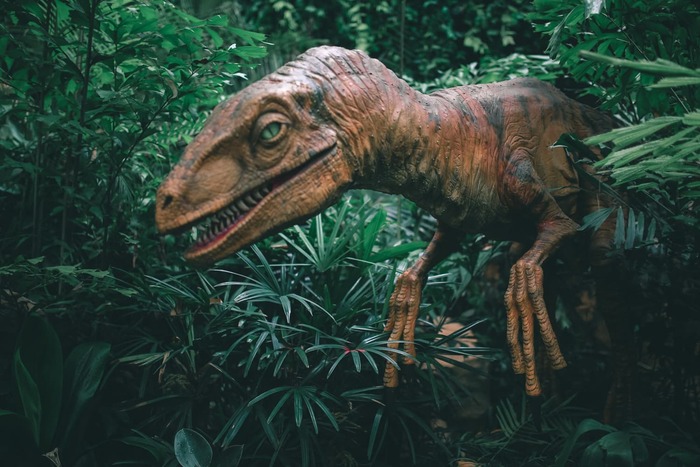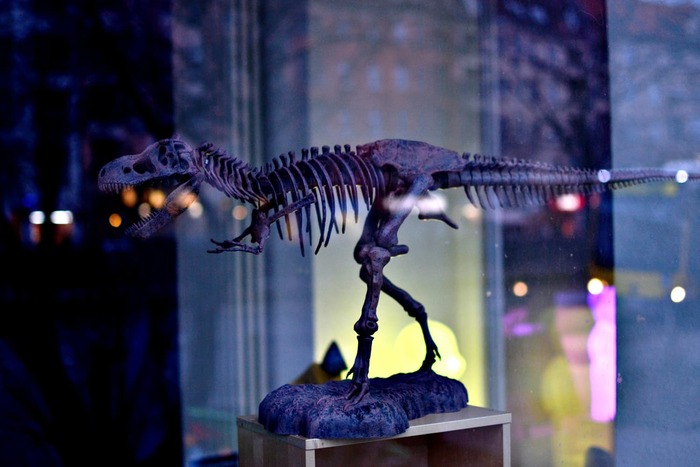
Darwin’s theory of evolution looks at the process of natural selection and how the biological bodies of species change over time. Outlined in his work, The Origin of the Species, the content was regarded as heretical at the time, because the theory contradicted the idea that an all-powerful God created a fixed world and all the immutable beings in it. While even today the theory of evolution sits uncomfortably with some religions, there is nothing in the Buddhist teachings that contradicts the general idea. In fact, for Buddhists, the theory is entirely concordant with the Buddha’s teachings on dependent arising, not creationism, and the first of the four hallmarks of the Dharma: impermanence. Phenomena are constantly arising and evolving based on a multitude of causes and conditions, and it would be strange if humans and animals alike were not part of this grand flow of non-staticness.
This isn’t to say that the Buddhist idea of time and evolution exactly corresponds to that of Darwin. Darwin’s theory concentrates on the biological and physical bases with which sentience can arise, and although there is the idea of increasing awareness as life forms become more complex, it doesn’t go as deeply as the Buddha does with descriptions of the evolution of awareness from the lowest life forms up to the full enlightenment of a Buddha. Also, Darwin speaks of the evolution of the awareness of species as a whole, whereas Buddhism speaks, in addition, of the evolution of awareness in individual beings.
Furthermore, Darwinian evolution has a gradual and constant “improvement” – that is, beings progressively and positively develop into forms that are better for their survival and ability to produce offspring. Buddhism teaches that any sentient being can be reborn in a wide variety of forms, and this process is not one of linear improvement. Individual beings and whole species can regress depending on karma, causes, and conditions. Thus, although the details differ, the principle of evolution is found in both systems.
The Evolution and Disintegration of the Universe
According to scientists, the Big Bang – a huge, rapid expansion of the universe that occurred 14 billion years ago – is the beginning of time and created the basis for our planet to form 4 billion years ago. Over time, hydrogen gas developed into various stars and planets, and on this particular planet we now call Earth, single-celled organisms arose. These then grew in complexity to the various advanced life forms we see around us today. Scientists also say that, after billions of years during which the universe expands and evolves, the universe will come to an end, and they postulate several different theories of how that will happen.
The Buddha discussed the evolution and eventual disintegration of the universe in the Knowledge of Beginnings Sutra (Pali: Agganna Sutta). There, he also looks at the build-up and eventual degradation of the environment on our planet, as well as the arising of different life forms and their eventual extinction and the development of different societies and their eventual demise as well. One difference between modern science and Buddhism, however, is that the Buddha said that the arising, abiding, and perishing of the universe is just one part of a cycle of many, and that time has no beginning or end. The sutra says:
Sooner or later, after a long period has passed, Vasettha, this world devolves... But sooner or later, after a very long period has passed, this world evolves... At that period, Vasettha, there is just one mass of water, and all is darkness, blinding darkness. The moon and sun are not manifest, constellations and stars are not manifest, night and day are not manifest, months and fortnights are not manifest, seasons and years are not manifest, male and female are not manifest. Beings are (just) classified as beings…
Here, we can see that the Buddha quite clearly talks about the cycles of world systems, along with a mention of beings. The sutra continues with how genders appear and how societies develop with a range of different classes of people. It then describes how the environment and beings in it come to degrade and disappear.
From this sutra, and from the Buddhist teachings on dependent origination and impermanence, we can see there is no contradiction in accepting the scientific theories of the Big Bang or any of their theories of the end of this universe.
The Evolution of Bodies
Now, let’s look more closely at the evolution of biological bodies. The theory of evolution is clear on this – all of us evolved from single-cell organisms. Darwin’s theory proposes progressive evolution, in which beings evolve in an upwards fashion – in other words, there is an innate tendency to evolve only in an improved way. Here, we are only talking about the physical basis, because Buddhism would say that there is a great difference between the physical life forms on the planet and the continuity of the mental continuums of the beings that are reborn in them.
There used to be dinosaurs roaming the planet, but now they are extinct. Why can’t we be reborn as a dinosaur now? According to the scientific theories, some 66 million years ago, a cataclysmic event led to the extinction of dinosaurs, but not mammals (like us humans), who later flourished. Darwin’s theory would say that dinosaurs didn't survive the “survival of the fittest” race, and thus they were wiped out.

From a Buddhist point of view, there needs to be the appropriate circumstances available for karmic forces and potentials to ripen. The circumstance to be reborn as a dinosaur simply does not exist at this moment in time here on this planet. Instead, we have a variety of other physical bases available for rebirth. These too are subject to change over time. Of course, if there are dinosaurs currently present on some planet in another part of our universe, Buddhism would accept that we could be reborn as a dinosaur there!
During a discussion that His Holiness Dalai Lama had with scientists, he was asked whether computers could become sentient beings: could computers one day have minds? He answered in an interesting way, saying that if a computer or a robot reaches the point at which it was sophisticated enough to serve as the basis for a mental continuum, there is no reason why a mental continuum could not connect with a purely inorganic machine as the physical basis for one of its lives.
This is not saying that a computer is a mind. It is not saying that we can create a mind artificially in a computer. However, if a computer is sophisticated enough, a mental continuum could connect with it and take it as its physical basis. This is even more far-out than Darwin!
Why Didn’t the Buddha Explain More about Evolution?
Seeing as Buddhists view the Buddha as omniscient – after attaining full enlightenment, he knew everything – we might wonder, why didn’t he then discuss or reveal in even more detail the workings of the universe and the evolution of beings?
In general, everything the Buddha taught has the aim of furthering us on the path to liberation and enlightenment. Thus, his purpose in describing the vast cycles that universes and the beings in it go through was to help people realize the rarity of the precious human rebirth that they have now. By appreciating its rarity and the difficulty of obtaining one again, people will be inspired to take best advantage of their present situation to work toward these spiritual goals. Buddha did not come to this world to teach us cosmology or astrophysics.
Pondering issues that are irrelevant to that aim is seen as a waste of time and energy. Especially when our minds are filled with confusion and we are driven by disturbing emotions, to ponder about the universe and the number of sentient beings within it – especially when based on our belief in misinformation about them – will just sidetrack us from our aim for liberation and the ability to help others. We might end up with even more confusion.
There are several stories from the Buddha’s life that illustrate this point. For example, the Buddha was asked about whether the universe is eternal or not, and whether, after death, the self continues to exist or not. In all of these instances, the Buddha chose to remain silent, and not answer. In the end, the Buddha said that when people are confused and believe in things like creation and an unchanging, created soul, any answer he would give would just compound their confusion. If there is no such thing as an unchanging, created soul, what sense does it make to question whether the number of such souls is finite or infinite?
This in itself is a great teaching. After all, does knowing the size of the universe or number of beings in it – even if we have correct information about how they exist – help us overcome our suffering and problems? Does it aid in benefitting other beings? The Buddha said that we’d die before we’d manage to resolve any such questions, wasting the precious life we have. Such speculation, while perhaps fun, doesn’t really help us. What is important is to recognize the reality of our present situation and to take advantage of the rare opportunities we have. Understanding that we are actually in samsara, but now have a precious human body and mind, we can use them to overcome suffering and help all others. We can practice the methods that lead us to full enlightenment. And, once we get there, perhaps we’ll have our answers to all of these unanswerable questions!